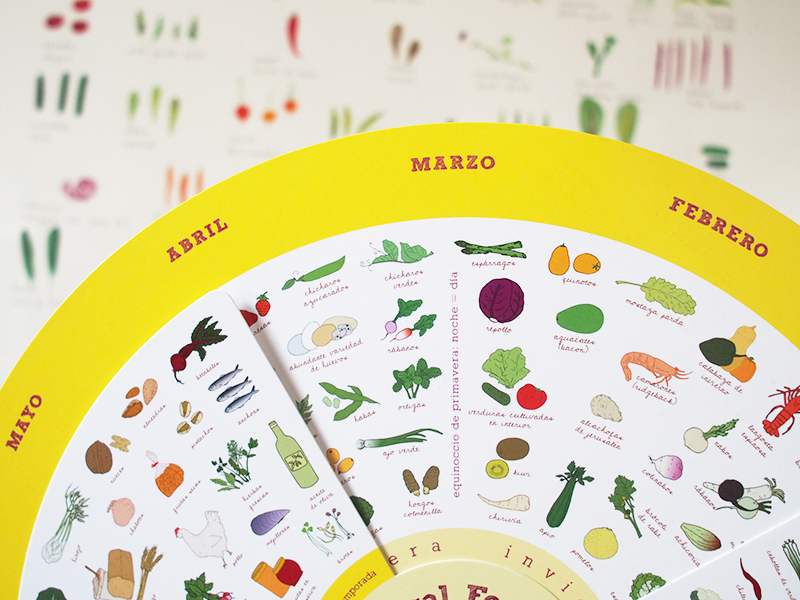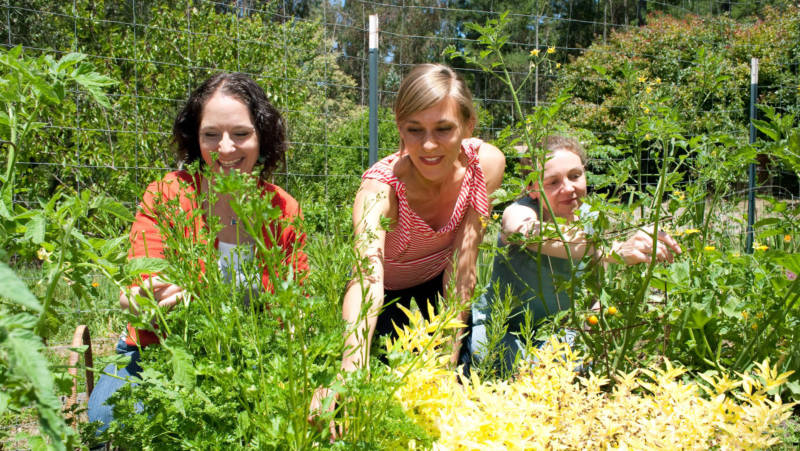Bay Area culture has its unsung corners — even in its much-touted food scene. Sometimes important work isn’t splashy, viral-marketed, or all over the blogs. Sometimes, it’s just two pieces of lightweight paperboard with a metal rivet in the center.
The Local Foods Wheel isn’t famous, exactly, but you’ll find one inside the home of anyone who likes food, tacked to the wall or magnetically attached to the refrigerator. It does the simple job of showing which foods are in season, month by month. The concentric circles, covered with tiny hand-drawn renderings of regional products, are a vital tool for the kitchen and shopping list of alert eaters around the Bay Area: The smaller top layer shows what items are available year-round, such as honey or radishes, while the bottom layer, revealed by the window in the top one, shows the fava beans, Dungeness crab, or tomatoes that only appear for a short time each year.

Because of the wheel’s design, it’s simple enough for a child to understand — yet beautiful enough to be welcome in the most artful places. It’s well appreciated by the Bay Area, for example, at the Alice-Waters-helmed Edible Schoolyard Project. “The Local Foods Wheel is a wonderful tool for edible education,” Director of Partnerships and Engagement Liza Siegler, “illustrating for students in a fun and clever way how to eat with the seasons wherever you live.”
Ten years and 25,000-plus units into this project, six different regional Local Foods Wheels now exist: they cover the Bay Area, Southern California in both English and Spanish, the Upper Midwest, the Northeast, and recently, the Northwest, thanks to three women: illustrator Sarah Klein, designer Maggie Gosselin, and food expert/researcher Jessica Prentice.
Maggie Gosselin’s Mission District apartment is a marvel of cool light and gentle order. Gosselin welcomes me on a recent morning and offers coffee and fruit — seasonal, of course. She tells me putting together a fruit plate is one of her favorite things to do as she tends to a high-octane pourover. Unsurprisingly, she’s also quite skilled at putting together a fruit plate. The green and fuchsia kadota figs, in particular, are consternatingly good. I can’t understand why they taste so exactly like honey.



